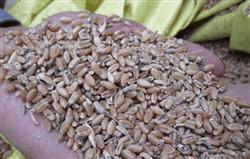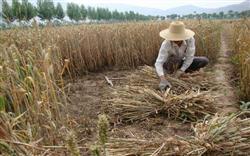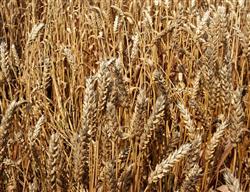How to prevent sprouting and mildew in wheat harvest?

How to prevent sprouting and mildew in wheat harvest? Is there any way to often encounter rainy and waterlogging weather during wheat harvest, resulting in panicle sprouting or grain mildew, which not only seriously affects the yield, but also results in the decline of wheat quality, storability and seed quality, and brings losses to agricultural production and farmers' income? The prevention methods are as follows: first, select suitable varieties according to local conditions to select rain-resistant and high-yield varieties with good comprehensive characters, long dormancy period and early maturity. After ripening, wheat grains need to go through a dormant period to sprout. Different varieties have different dormancy periods, ranging from a few days to dozens of days. Generally speaking, the dormancy period of white wheat is short, the dormancy period of red wheat is long, the dormancy period of paddy land type is shorter, and the dormancy period of dryland type is longer. So choose a variety with a longer dormancy period, which can get twice the result with half the effort. In addition, early-maturing varieties should be properly selected to avoid the rainy season. Second, adjust the harvest time according to the arrival time of the local rainy season, sowing early or late appropriately, so that the wheat ripening period can avoid the rainy season as far as possible, and spray ripening agents to promote wheat yellow 10 days before wheat ripening, so as to promote early harvest of wheat and avoid the rainy season. Third, reasonable regulation and control of fertilizer and water and reasonable fertilization to prevent excessive application of fertilizer, especially nitrogen fertilizer, resulting in greedy green and late ripening. Establish a supporting ditch system to ensure smooth irrigation and drainage, reduce field humidity, and prevent wheat from sprouting in the environment of high temperature and humidity. Fourth, strict prevention wheat lodging wheat lodging wheat ear in high temperature, high humidity small environment conditions, spike sprouting will be aggravated. In production, various measures such as formula fertilization, proper sparse planting and application of dwarf should be taken to prevent wheat lodging and reduce the probability of wheat panicle sprouting. 5. Spraying penicillin, paclobutrazol, panicle sprouting inhibitor or Sui Dean evenly before rain in the yellow ripening stage of wheat could inhibit grain germination. Pay attention to the medicament-treated wheat can not leave seeds, so as not to reduce the germination rate of seeds. Sixth, harvest, crush and dry the wheat in time, harvest and beat the wheat as soon as it is ripe, dry it into the warehouse as soon as possible, stack in advance if it is not crushed in time, and do a good job of rain protection on rainy days. Seventh, anti-mildew after harvest 1, spread out the wheat grain evenly in the empty room, the thinner the better, and often turn. If it is spread out thicker, it can be piled into a circle, and bamboo baskets are placed in the middle to ventilate and reduce humidity. 2. The mechanical cooling method puts the wet wheat on the ventilated cool bed. If there is no cool bed, it can be spread out thinly on the ground (the thickness is not more than 30cm). Use the blower, electric fan and exhaust fan to cool and drain the moisture, and turn it every 5 hours. 3. In the method of natural hypoxia, the shade with higher terrain is selected, the bottom is paved with wheat bran or straw, then the wheat is piled on top, covered with new plastic film, tightened around the film and covered with soil to isolate the air, thus inhibiting the breathing of wheat grains and microorganisms. 4. The anoxic method of leaves puts the perforated equipment containing fresh leaves into the grain heap, and the grain surface is sealed with plastic film. Because the leaves breathe vigorously, the oxygen in the grain pile can be consumed in a short time, thus inhibiting the respiration of wheat and the reproduction of mold. Prevent wheat grain from heating and sprouting. 5. Salt alum mixing method 1.5-2 kg salt and 0.5 kg alum for every 100 kg wet wheat, mix well and stack in indoor ventilated place and sealed with plastic film. Because salt and alum have moisture absorption and germicidal effect, they can better prevent wheat from sprouting and mildew. 6. Spray vinegar for every 500 kg of wheat, spray 2.5 kg vinegar, spray and mix well, pile it up and cover the plastic film and press the perimeter with soil or sand. 7. The method of mixing bleach is mixed evenly according to the proportion of 500 kg wheat and 1 kg bleach, and sealed with plastic film, so that the wet wheat will not get hot and mildew in a short period of time. The above methods can control the quality of wheat without great change in a short period of time. Once the weather turns fine, we should pay close attention to drying, and only after drying can we keep it for a long time. Click to get more wheat planting technology click to get more grain planting technology
- Prev

What should you pay attention to before harvesting wheat?
What should you pay attention to before harvesting wheat? The following points should be paid attention to in harvesting wheat: first, the most suitable harvest stage for wheat is from the end of wax ripening to the full ripening stage. The suitable harvest time is high yield, good quality and high germination rate. Early harvest, not full grain, low yield and poor quality. The harvest is too late.
- Next

How to prevent yield reduction during wheat harvest?
How to prevent yield reduction during wheat harvest? What factors will lead to a reduction in production? The ripening process of wheat includes two stages: the wax ripening stage and the complete ripening stage, and the best harvest period is the last wax ripening stage. Because the 1000-grain weight of wheat reached the maximum at the end of wax ripening, the harvest yield was the highest at this time. If the harvest time is inappropriate, too early or too late.
Related
- The first cup of black tea in spring, the flavor and history of tea gardens in Kenya, Africa
- The computer can not only choose potatoes, but also grow tea rice. AI will grow winter oolong tea champion.
- It is not only the inflated tea bitten by insects, but also engraved with the four seasons tea in Beipu.
- The Oriental Beauty Tea Festival in Zhuxian County takes the stage at the weekend to experience the plus-size feast of oil tea.
- & quot; Oriental Beauty Tea & Exploration of Emei in Hsinchu, the hometown of quot;
- The new variety of strawberry "Tainong 1" dessert is the first choice with mellow aroma. Crimson gorgeous
- History of Tea in Taiwan: from Wild Inner Mountain to Export Tea Garden
- Two types of Taiwan Oriental Beauty Black Tea won the British three-Star Award for Childhood Tea Xiang Zhang Jiaqi changed from pilot to champion tea maker.
- Banana species and varieties: the planting history of Taiwan Xianren banana and dwarf banana is long, is banana disease resistant?
- Coffee planting Technology: Qianjie Coffee from Seedling to harvesting

